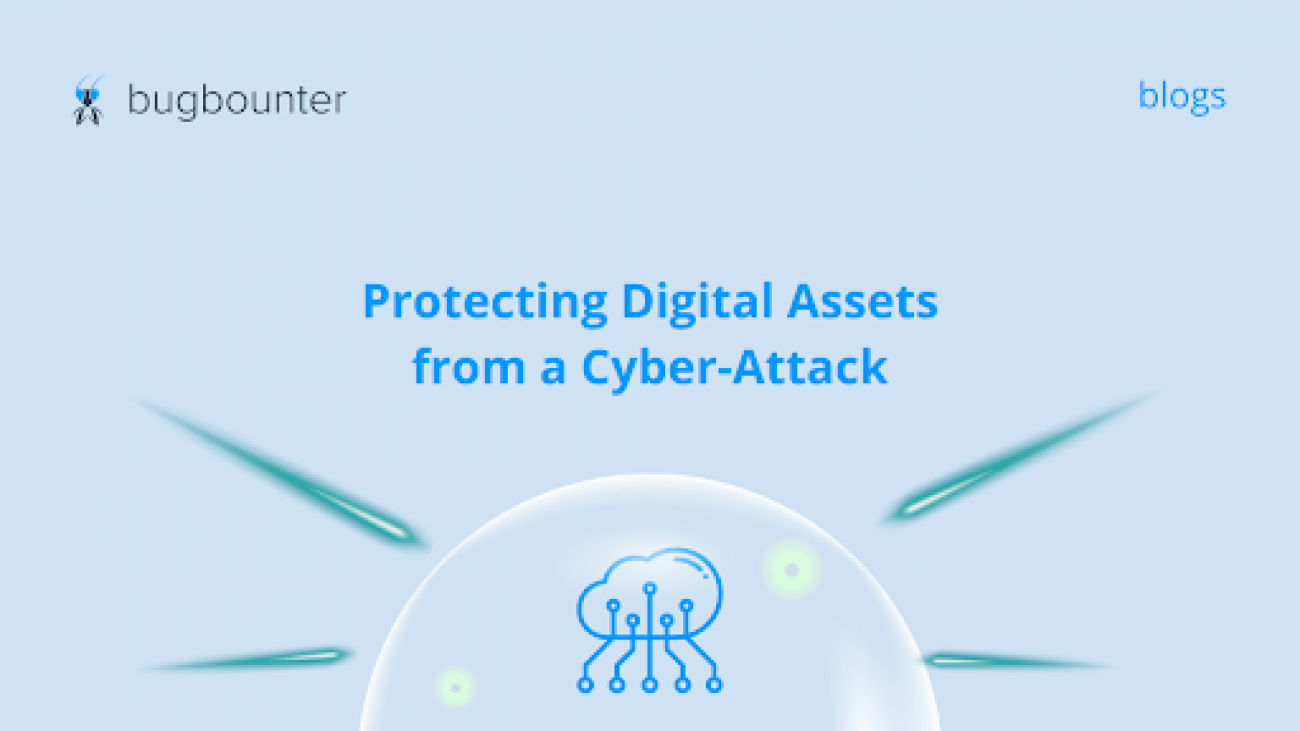Protecting your digital assets from a cyber attack is an ongoing process for any organization. Securing data in digital assets valuable to every organization is essential as they store and manage data relevant to their functioning. Business owners, regardless of which industry they are in, have to safe-keep their digital assets. For example, if you’re running an automobile company, your physical assets, which may come in motor parts, keep the business running. However, the trade secrets regarding the formulae for the motor parts are stored online. For eCommerce companies, digital assets such as image files, digital documents, and other applications play a significant role.
Top management must lead the initiatives to protect critically important data, applications, and systems to build digital resilience. The critical importance of a company looking to protect its digital assets against cyber threats is identifying the assets that need protection. Protecting every digital asset may not be required, and organizations may not have the option to invest their time, money, and resources in securing every asset.
Read this blog to learn more about protecting digital assets. Reach out to BugBounter to understand how to differentiate between the different ways to protect them.
Why Protect Digital Assets?
Digital business models should address the major pain points faced in cyber security and ways of coping with the risks. For instance, cyber-attacks are bound to happen if the working systems are not integrated with interfaces that are not secure. As the saying goes, “Prevention is better than cure”; mitigating the cyber security risk is better than repairing the damage.
Systems breaches should not be taken lightly, as they have been multiple in the past few years. New cyber security attacks have grown immune to the security models that are improvised from time to time. Staying updated with the latest cyber security issues and working to control the problems helps form proper defenses from future attacks. Cyber security defenses are designed in alignment with business operations so they don’t interfere with the existing architecture across different parts of the organization.
Ways to Protect Digital Assets
For digital resilience to exist, an organization’s security team should identify its primary assets, including software, IT systems, and other data management utilities. Applications and business processes must be designed while giving priority to information security. This cross-functional strategy helps build digital resilience by identifying and assessing possible vulnerabilities to find the best solution.
Keep the following things in mind to establish the protection of digital assets within your organization:
Hire An Expert Team
As you start the journey towards digital asset protection, it’s best to utilize proven experience to avoid loss of resources. An expert team or an individual consultant would be able to take up full responsibility for the IT security of a company if your digital assets are the primary tool. Of course, you may have set aside some investment for installing security systems as a whole. But every business will look forward to achieving cyber security without investing many resources. An excellent agency may come with a lot of hands-on experience and industry knowledge that will make things smoother for you.
Authorize Permissions to Only Those Who Require
Giving all employees the same level of access to company assets may be more convenient, but it is not a safe measure against cybersecurity threats. Following the same patterns can be a great advantage for hackers to enter your systems. Also, your employees may fall prey to phishing and other data security issues they may be unaware of.
Many tools and services are available to keep track of data and who has access to it. For instance, instead of allowing everyone in the company to acquire access to employee data, you can restrict the access to only the concerned department. Or better yet, you can provide access to only such information that is relevant to the employees in the first place.
Have An Inventory of All Your Assets
Even after implementing cyber security, your assets can be stolen or exploited, which can devastate the whole organizational functioning. Minimize such damages by preparing an inventory listing down all your assets. By having a record of every asset you own, you can identify whenever there is a threat or issue and do a round-up check to confirm that every asset is in place. Doing so can ensure that a particular asset is intact and smoother functioning of all units.
Implement Security Measures
Digital assets, when under threat, would mean physical assets should also need monitoring. As physical assets are the storehouse of digital assets. Hence, if you plan on protecting them, you should enforce security measures that keep physical assets also secure. Install alarm systems if the security tools find a system breach or unauthorized access. Ensure that you enforced security measures on the following physical assets:
- CCTV cameras
- Access control systems
- Firewall
- Incident response software
Keep Software and Tools Up-To-Date
Outdated software may look like an affordable option, but your business will suffer in the long run. A hacker may have updated tools, and your outdated software may malfunction and exploit your digital assets.
In short, keeping your software up-to-date is not a choice but a necessity if you are serious about securing organizational assets and protecting your business. Besides, extra load from outdated software affects physical assets, which can cost you more in the future.
Backup Your Files Regularly
Data loss is a common thing that happens in organizations dealing with a vast amount of data. There is no quick way to eliminate data loss unless you have certain data management practices.
Create an extra repository to store backup data of your files so that you don’t have to face permanent data loss. You can also do it manually by copying the assets and saving them on external data storage.
Consequences of Not Protecting Your Digital Assets
Data breaches, a common occurrence, happen when hackers gain access to an organization’s systems. It can lead to the loss of customer trust and confidence and financial damages. In some cases, it may even result in legal action against the organization. Another potential consequence is reputational damage. In the even of a digital asset breach, the resulting publicity can damage its reputation and make it difficult to attract new customers and partners. Organizations must take steps to protect their digital assets in this era’s rapidly connected world.
Protect Critical Digital Assets with BugBounter
Protecting digital assets is a part of cybersecurity practices for businesses to grow sustainably in the long term. It is all about investing early rather than working around to solve a cyber security issue after you face it. When protected, critical digital assets provide a safe environment for the organization’s employees.
In the era of digitalization, every company is a technology company. And as digitization advances, so do the risks and challenges against cybersecurity. Today, one of the most pressing concerns for companies is how to protect their digital assets. Businesses have much to lose, from customer data and financial information to trade secrets and intellectual property, in case of compromising. We are a company that offers bug bounty solutions for digital assets as a measure against cyber security attacks. We work with companies to support them in mitigating the risks associated with sensitive data. As BugBounter, we help companies detect their most critical risks with our community of more than 2700 cybersecurity experts. Contact us here, and we will assist you in finding what’s suitable for your company.

